There are more than 14,000 species of mushrooms worldwide.
Each type of mushroom offers different benefits, with most people using them to prepare various dishes or for medicinal purposes. We’ll show you 14 of the most common in our guide below.
Common Types of Mushrooms: A Summary
Mushrooms are cholesterol-free, fat-free, and high in vitamins and fiber. They’ve become popular across the globe thanks to their versatility and meat-like heft.
Some common types of mushrooms are:
- Beech Mushrooms
- Oyster Mushrooms
- Morel Mushrooms
- Shiitake Mushrooms
The 14 Most Commons Types of Mushrooms

Esther Purple/Shutterstock
Each of these mushrooms is known for its taste, nutritional value, and properties.
1. Button Mushrooms
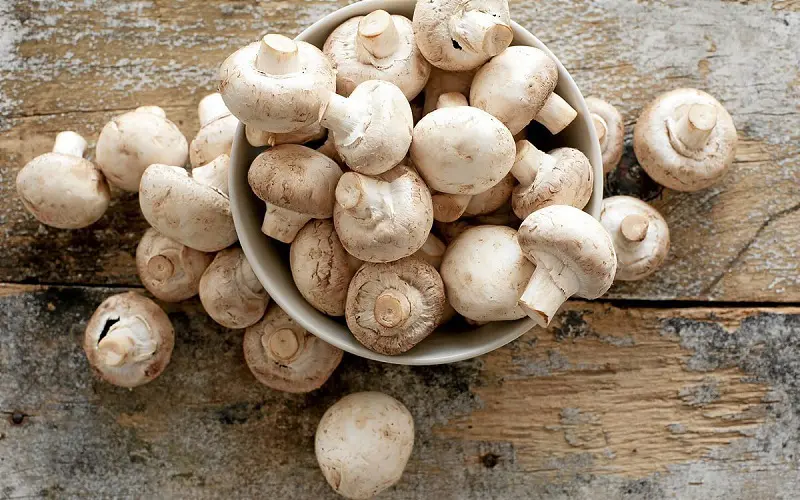
Stephen Gibson/Shutterstock
Button mushrooms, otherwise known as able or cultivated mushrooms, are the most popular type of mushroom. They come as brown or white mushrooms, but the white ones are the most common.
Brown button mushrooms are mature and usually have a rich taste when cooked. Whereas white button mushrooms are young and their taste is mild, you can eat this mushroom type even when raw without experiencing any major issues.
Alternatively, you may use them to prepare soups, salads, pasta, lasagna, and pizzas. When cooking these mushrooms, cut them into halves. However, they taste better when eaten whole.
2. Beech Mushrooms
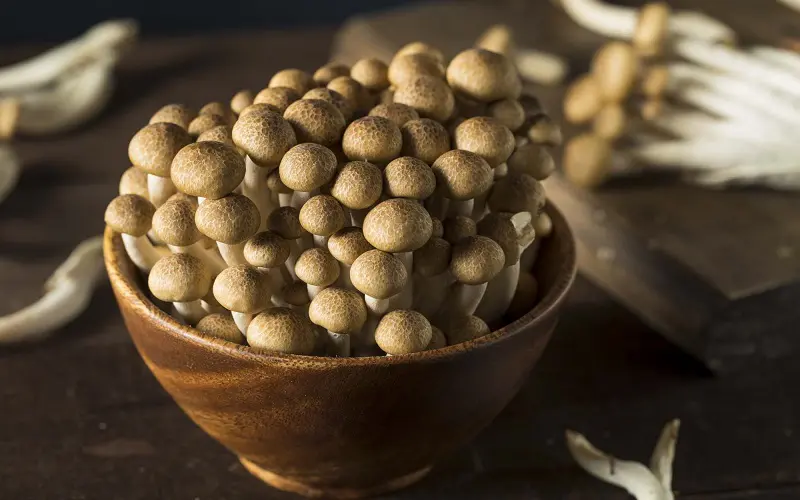
Brent Hofacker/Shutterstock
Beech mushrooms usually grow on fallen beech trees, hence their name. These mushrooms have unique characteristics that make them different from others. First, they have a unique mild flavor and an unusually crunchy texture.
Additionally, they grow in clusters, and their cups are about a quarter in size. You can eat this mushroom type when raw, but they are a bit hard and bitter. To enjoy their umami flavor, you have to cook them.
Since they have long, slender stems, they work well in stir-fries or brothy soups. Before cooking, trim the bottom part and separate them into individual stems.
3. Chanterelle Mushrooms

Lesya Dolyuk/Shutterstock
Trumpet-like shape with a depression in the center of the cap, chanterelle mushrooms are the most popular wild mushrooms available in the market. They usually grow in the West and Pacific Northwest, particularly during the cold months.
Since they are difficult to cultivate, you must look for them in the wild. Chanterelle mushrooms are known for their golden color and firm, meaty texture.
Despite having a fruity scent, they have a more earthy flavor, making them ideal for stews and soups. Sauté them in white wine, butter, and a splash of heavy cream to enjoy their unique taste. Serve it with crusty bread to soak up the deliciousness.
Often, people confuse Chanterelle mushrooms with Jack o’ Lantern mushrooms since they look similar. When foraging, be a bit careful because Jack o’ Lantern mushrooms can cause severe cramps and diarrhea when eaten.
4. Enoki Mushrooms
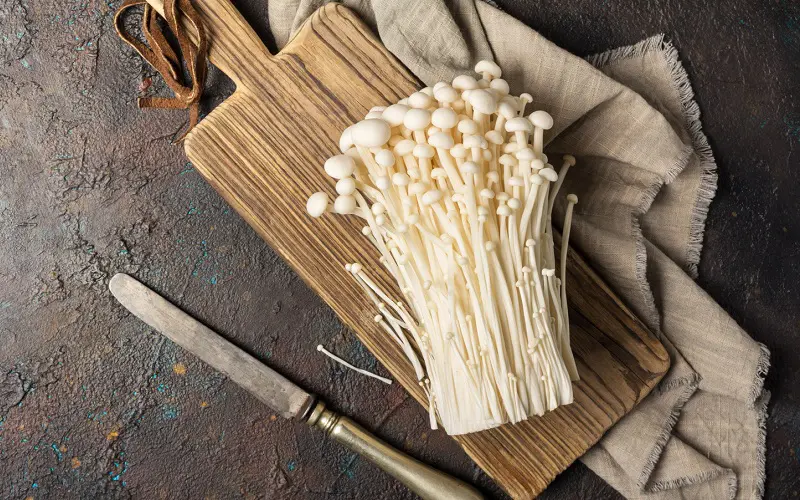
Chursina Viktoriia/Shutterstock
These noodle-like mushrooms have small and shiny caps attached to thin stems. Additionally, they feature a crunchy texture and mild taste.
Enoki mushrooms usually grow on ash trees, Chinese hackberry trees, mulberry trees, and persimmon trees. You can find enoki mushrooms in most Japanese dishes.
If you don’t like meat, you can use it as a substitute when preparing sushi. Other dishes you may prepare using the mushrooms include spring rolls, curries, stir-fry, noodle dishes, and soups. Quickly sauté and serve with seasoned rice.
5. Giant Puffball Mushrooms

Henri Koskinen/Shutterstock
Giant puffball mushrooms are big mushrooms, as their name suggests, and they are usually white. When they grow fully, they may weigh up to 44 lbs. For the mushrooms to taste good, pick them when they’re still young.
They rapidly take on the flavor of whatever you cook them with. If you leave them for too long, they may turn yellow or develop spores, which may upset your stomach.
People often confuse young giant puffball mushrooms with other poisonous mushrooms, such as common earthball.
To avoid making mistakes, slice the mushrooms open. Edible puffball mushrooms feature a solid white interior, while the poisonous type features a yellow interior.
6. Hedgehog Mushrooms

JO2/Shutterstock
Hedgehog mushrooms get their name due to the gills beneath the crown, which hang down, forming hedgehog-like spiky shapes. Identifying these mushrooms is quite easy, thanks to their yellow caps.
The cap can also be orange at times. Additionally, they have a sweet smell. Crunchy, meaty, and nutty, hedgehog mushrooms are similar to Chanterelle mushrooms.
If you want to eat them, wait until they grow fully, since the young hedgehog mushrooms can be bitter. The best way to prepare the mushrooms is to simmer, sauté, or pickle them in stock or milk.
7. Oyster Mushrooms

New Africa/Shutterstock
If you like Japanese or Chinese cuisine, you have come across oyster mushrooms. Also known as angel wings, oyster mushrooms are fan-shaped and white.
They have a soft texture, making them easy to shred with a fork. Another way to identify the mushrooms is by smelling them. They have a unique, sweet, mild aroma.
The mushrooms can be a perfect substitute for meat for vegetarians when preparing dishes like vegetarian fried chicken. When cooked, they become meaty.
Other ways to prepare oyster mushrooms include mushroom soup, stir-fries, or sauces. Often, oyster mushrooms grow in the wild on tree bark, but you can still cultivate them.
8. King Oyster Mushrooms

Maren Winter/Shutterstock
King oyster mushrooms resemble ordinary Oyster mushrooms growing on the top of a thick, white stem. The stems can also come with a shredded texture allowing you to chop them into planks and create a recipe for mushroom bacon.
King Oyster mushrooms are ideal for a vegetarian diet due to their large size. The mushrooms also offer medicinal benefits. They can improve your immunity and cure heart-related issues.
9. Morel Mushrooms

Mircea Costina/Shutterstock
The Morel mushroom is a renowned spring delicacy in the West and Midwest with a strong nutty or earthy flavor and a somewhat spongy texture. They resemble cones and taste best when fried, sautéed in butter, or prepared in a creamy sauce.
People who don’t like mushrooms should try this type. You can find Morel mushrooms in April at the neighboring farmers’ market, or you can go mushroom hunting in the wild.
If you’re lucky, you may discover a spot where they usually grow in the forest, and you can harvest them each year. You need to be careful when foraging the mushrooms since they have poisonous look-alikes.
10. Truffle Mushrooms

grafvision/Shutterstock
Truffle mushrooms are edible fungi that usually grow underground in wet soil. Often, these mushrooms grow near large trees since the soil near trees contains nutrients that support mushroom growth.
The best thing about these mushrooms is that they don’t grow at a specific location only. They can grow in Africa, America, Europe, and Asia. Nevertheless, they do extremely well in France, Italy, and the Pacific Northwest.
Due to their intense flavor, Truffles are excellent for cooking, and you can add them to food in the form of oils, sauces, or even whole Truffles. Despite being referred to as mushrooms, they have a stronger taste. However, they do maintain an earthy taste, just like mushrooms.
You should keep in mind that Truffle mushrooms are quite expensive, but they are worth every penny due to their versatility. You can use them to prepare various meals, from savory dishes to elegant desserts.
11. Lobster Mushrooms
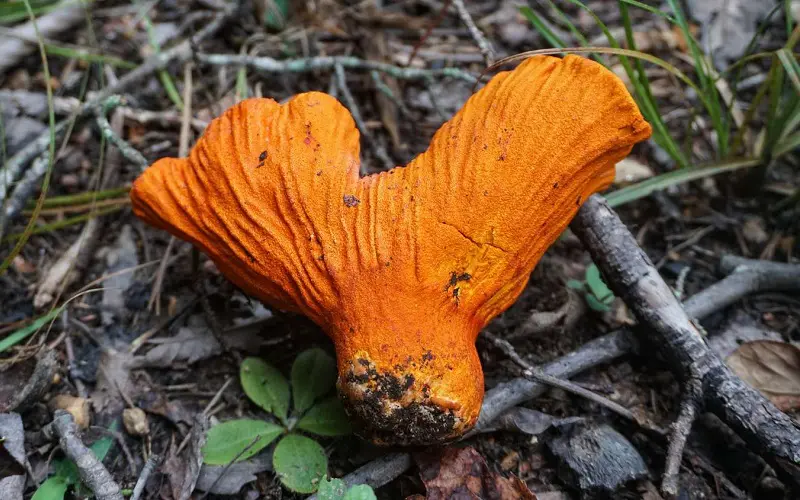
James Aloysius Mahan V/Shutterstock
Most people who’ve tasted lobster mushrooms describe them as meaty. Identifying these mushrooms is easy due to their vivid red color, resulting from a parasitic fungus known as Hypomyces Lactifluorom.
The parasite also alters their taste, making them taste like real lobsters. Besides enhancing the mushroom’s taste and color, the parasite also makes them smell like seafood.
12. Maitake Mushrooms

puttography/Shutterstock
Maitake mushrooms usually grow in clusters at the base of oak trees, resembling a cabbage’s head. Most Chinese or Japanese cuisines contain these mushrooms. One of the main features of these mushrooms is their soft and feathery caps.
They also have an earthy smell and gummy taste when cooked. Often, people use Maitake mushrooms for medicinal purposes.
They can boost your immunity system and have a hypoglycemic effect, which helps in lowering blood sugar and cholesterol levels. People who have diabetes or weight-related issues find these mushrooms beneficial.
13. Shiitake Mushrooms
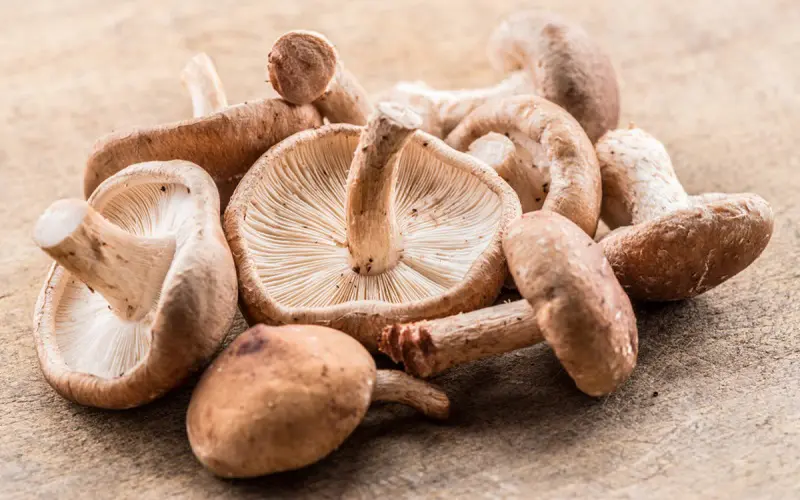
Valentyn Volkov/Shutterstock
Idyllic in shape, Shiitake mushrooms feature a thin stem and a spherical cap that slightly curves. They’re best used in soups and sauces because of their earthy flavor. Shiitake mushrooms have a stronger flavor than most mushrooms, and their texture is chewier.
Try them in a simple Mushroom Risotto to enjoy the taste. Before cooking, cut the stems and throw them away. You can cook these mushrooms when they’re still fresh or dry them first.
When dried, the mushrooms develop a strong earth or woodsy taste and smell. Previously, people used to hunt Shiitake mushrooms in the wild. However, nowadays, people can grow them on their farms.
14. Reishi Mushrooms
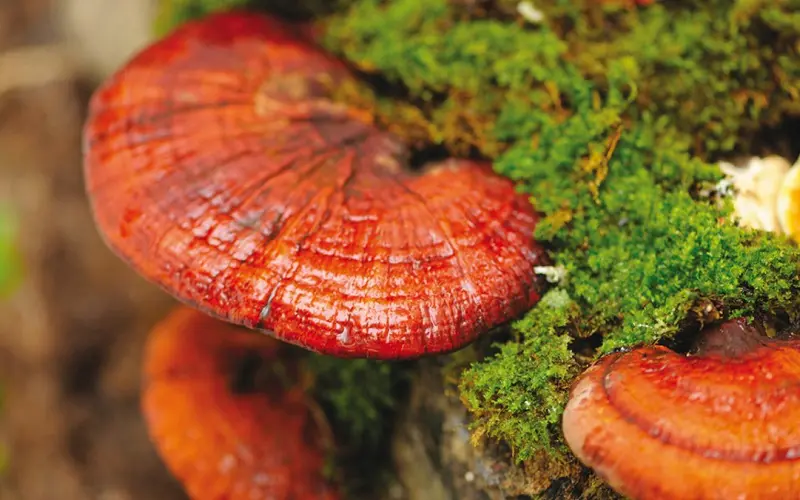
puttography/Shutterstock
The Reishi mushroom is usually regarded as the benchmark among therapeutic mushrooms. This mushroom is a polypore, meaning it’s stiff and cork-like. Reishi mushrooms usually grow on tree trunks and are unfit for human consumption.
Nevertheless, they have medicinal benefits. Scientists use them to make drugs that treat fatigue, boost the immune system, or lower cholesterol levels.
Some scientists claim Reishi mushrooms can lower high blood pressure or treat urinary tract issues. In the past, they used to grow on their own, but their scarcity and increase in demand have forced people to start growing them on sawdust or hardwood logs.
Frequently Asked Questions

Nalida Thanomveravong/Shutterstock
Here are the FAQs about the various types of mushrooms we’ve covered above:
What are the recommended humidity and room temperature for growing mushrooms?
You need a minimum of about 85% humidity for your mushroom growth. You’ll also need to lower the temperature at your mushroom-growing cell to about 13 degrees Celsius. Please, note that higher humidity and air temperature produce larger but fewer mushrooms.
What are the health benefits of mushrooms?
Mushrooms are a superfood of powerful nutrients. Apart from being fat-free, they contain natural antioxidants, have dense nutrients, and are low in sodium and calories.
Do mushrooms contain vitamin D?
Yes, all mushrooms contain some vitamin D. Due to their exposure to sunlight and UV light, they have a unique ability to increase vitamin D quantity.
Are mushrooms classified as vegetables or fruit?
Mushrooms are neither classified as vegetables or fruits; they are fungi. For dietary recommendations, mushrooms are commonly placed in the vegetable category. However, they aren’t vegetables based on their cellular composition and organization, such as ergosterol and chitin.
What are the recommended humidity and room temperature for growing mushrooms?
You need a minimum of about 85% humidity for your mushroom growth. You’ll also need to lower the temperature at your mushroom-growing cell to about 13 degrees Celsius. Please, note that higher humidity and air temperature produce larger but fewer mushrooms.
How do I keep my mushrooms fresh after harvest?
After harvest, package your mushrooms in a paper bag and keep them in a fridge for utmost freshness. Avoid storing your mushrooms in ceramic, glass, or plastic, as this would hinder their breath.
So, What Are the Most Common Types of Mushrooms?
Mushrooms have both nutritional and medicinal benefits. Some mushroom types usually grow on their own in the wild, but you can cultivate others. When preparing mushrooms, cook them alone or mix them with other dishes.
If you’re looking for specific types of mushrooms, buy them in the local grocery store or order them online, especially if they don’t grow in your region.

